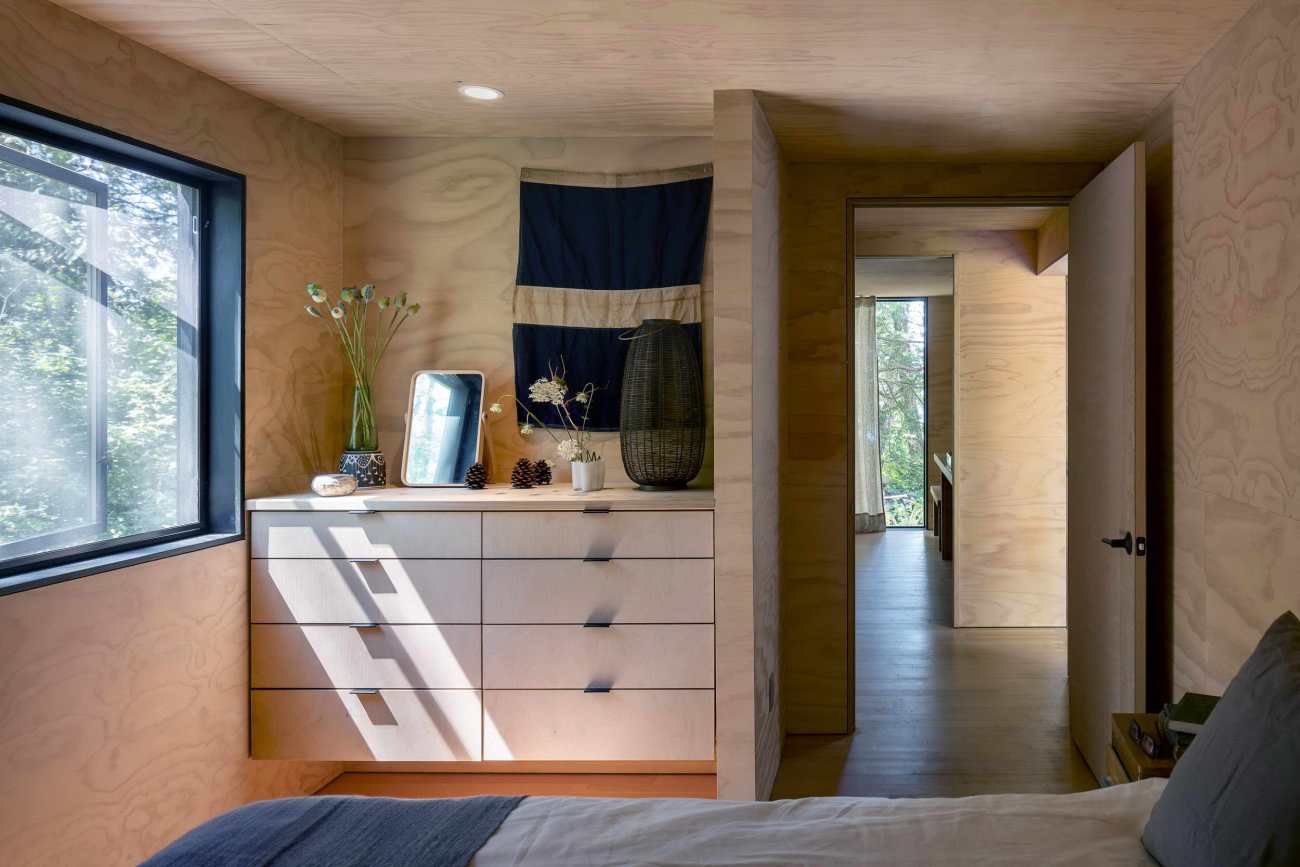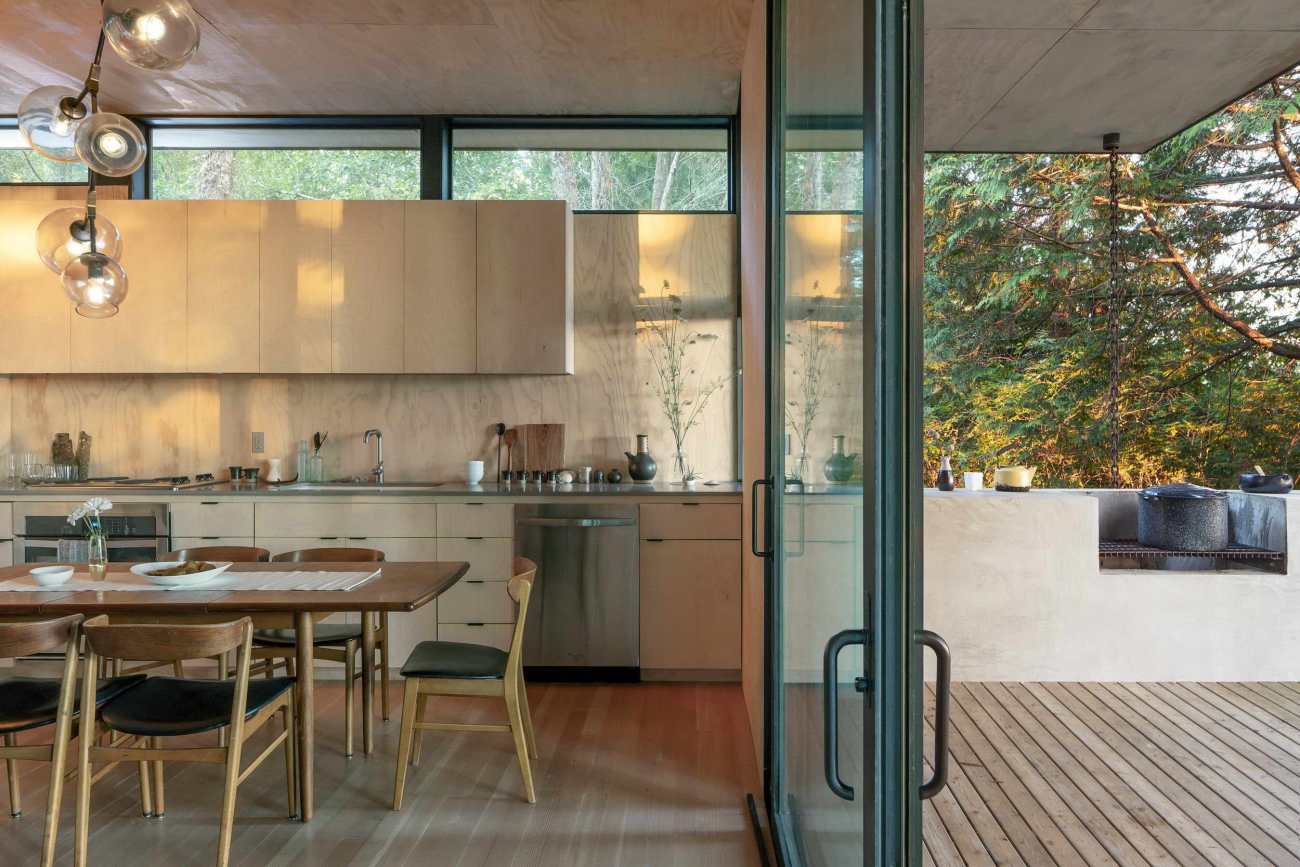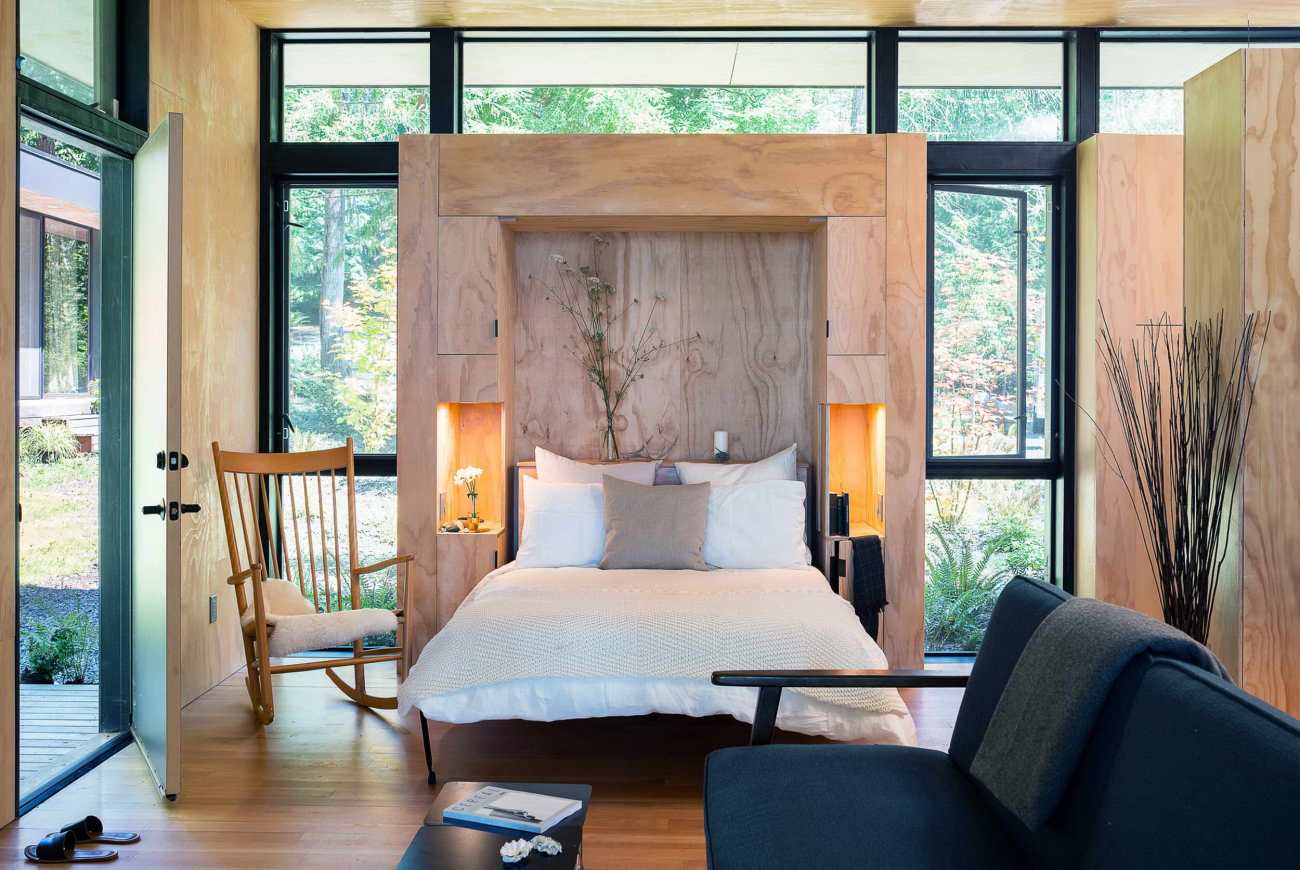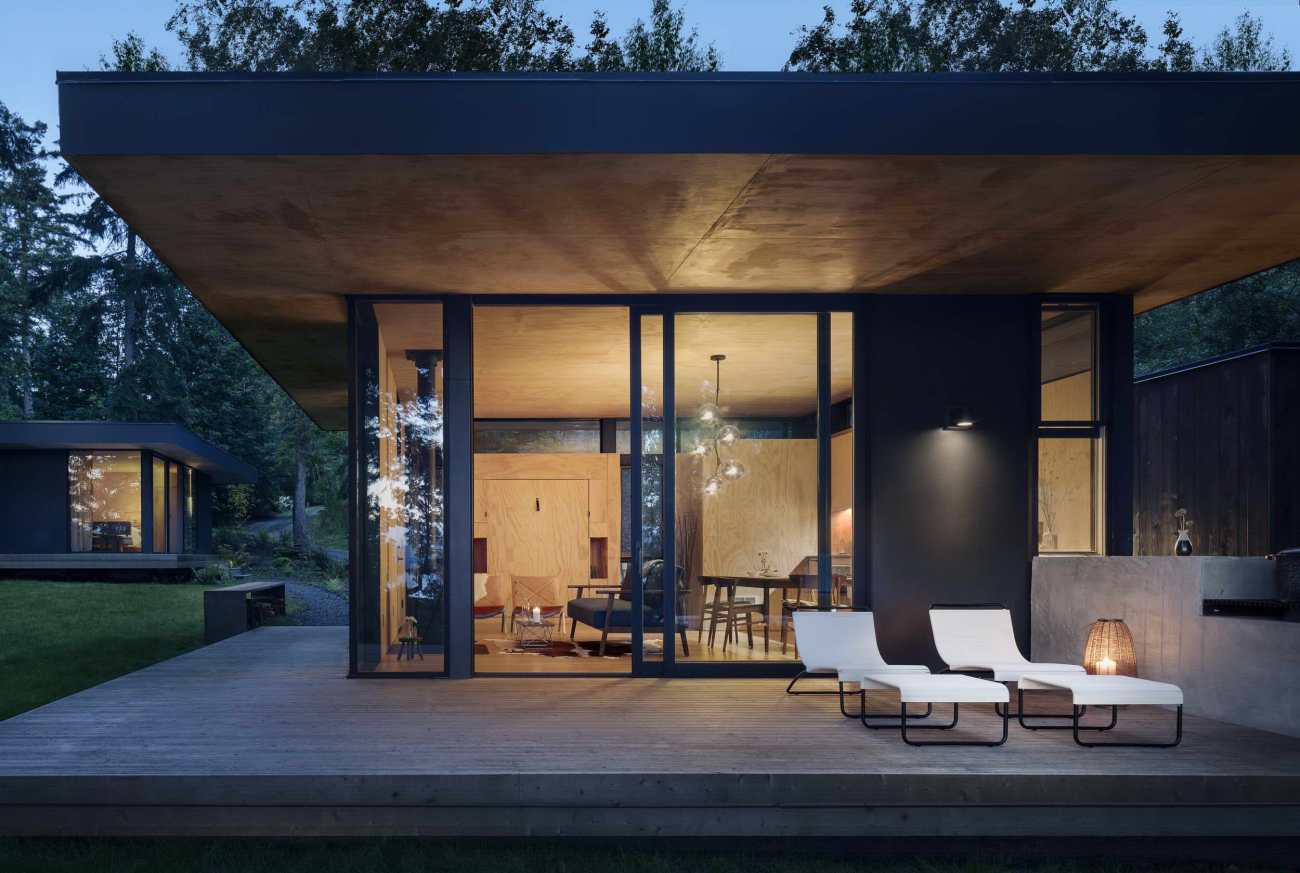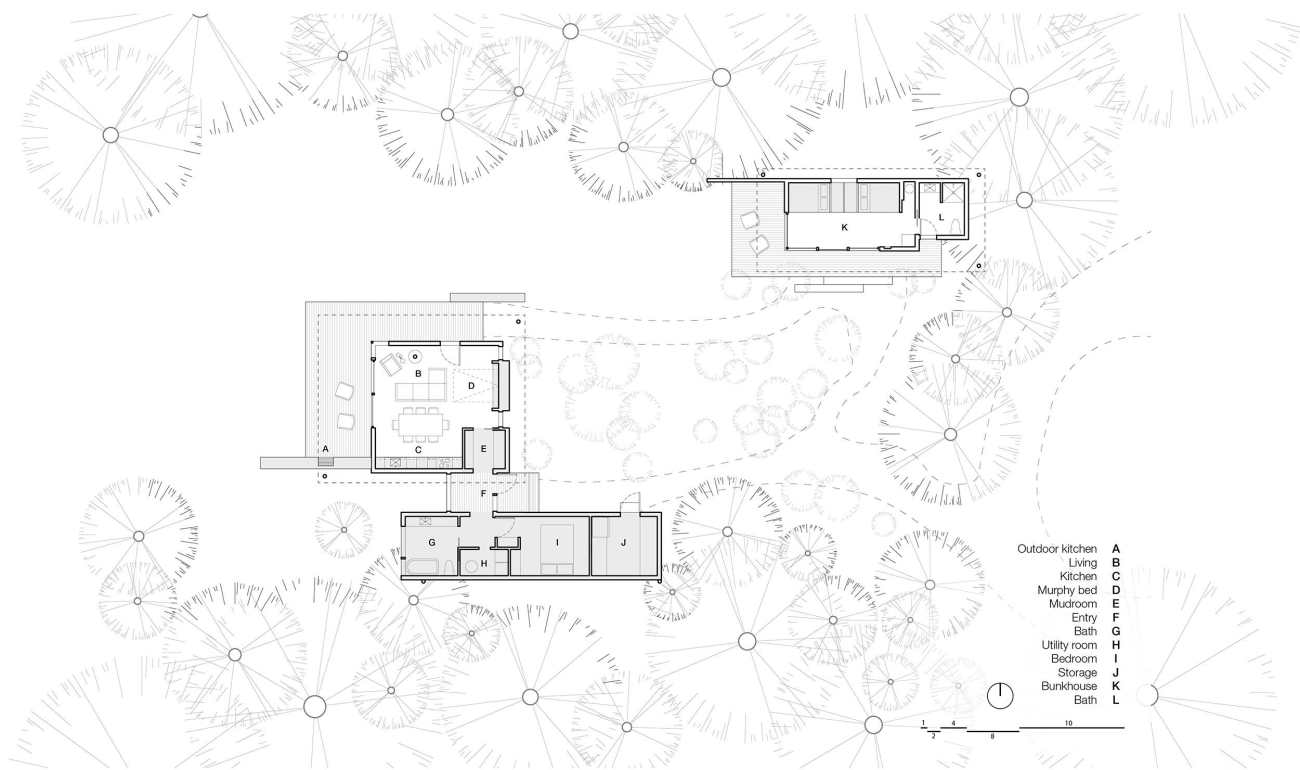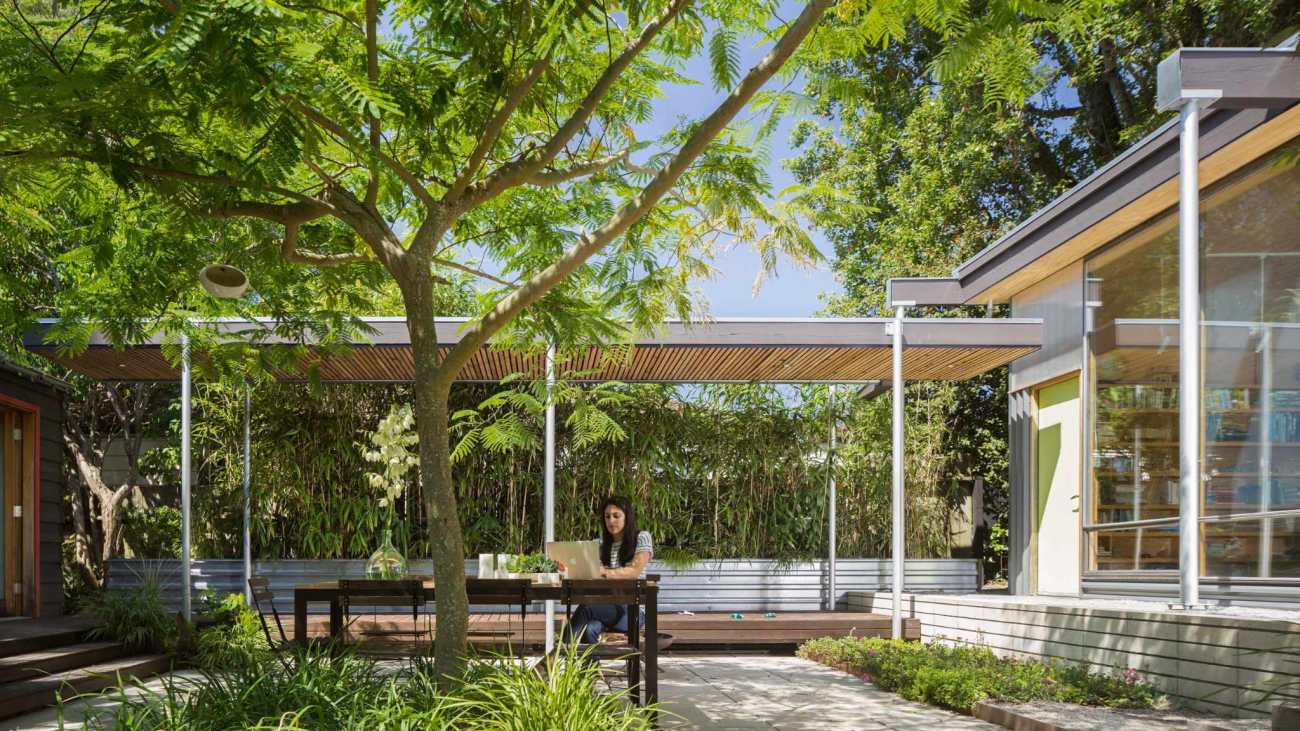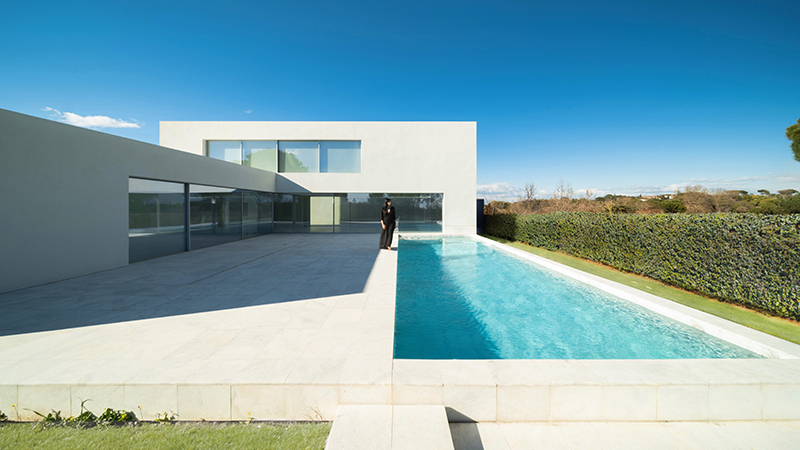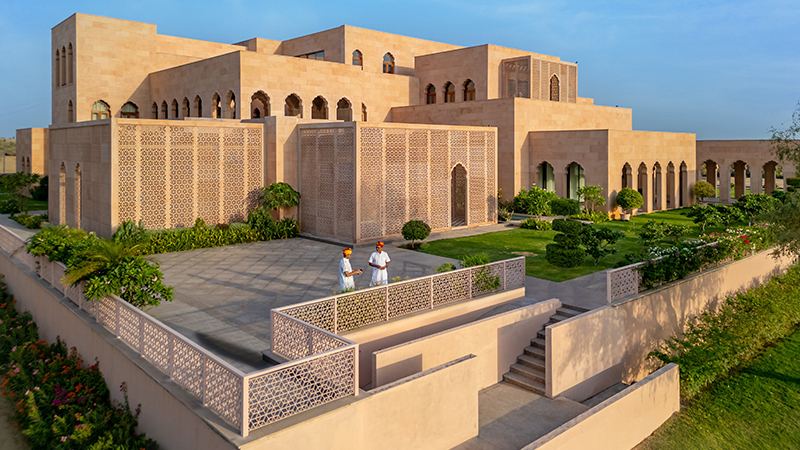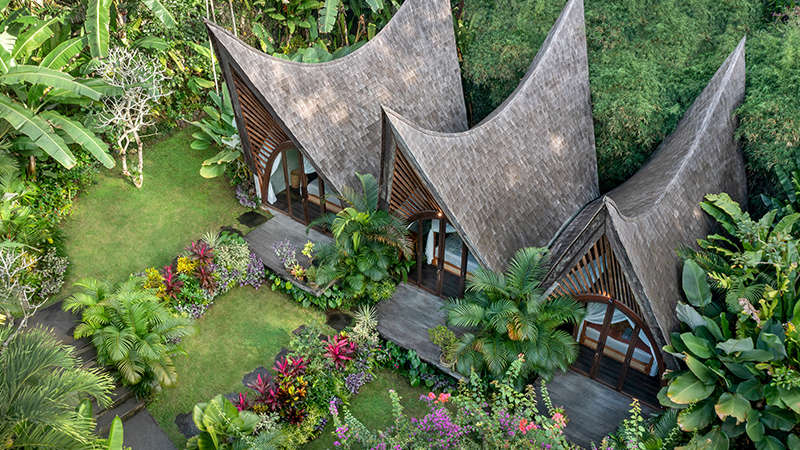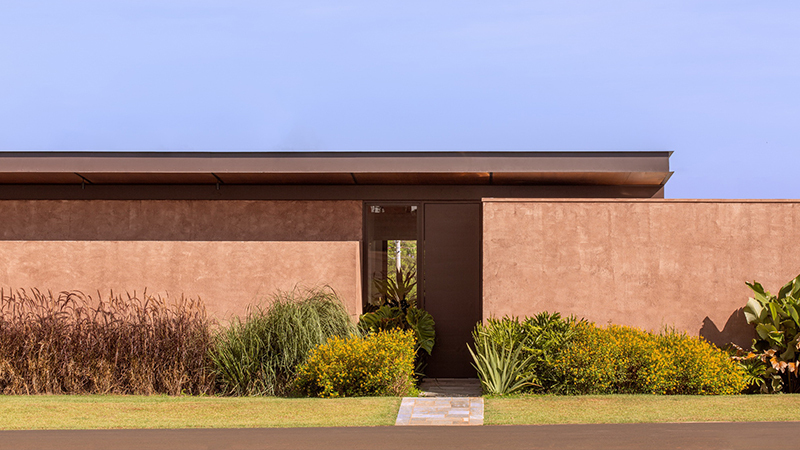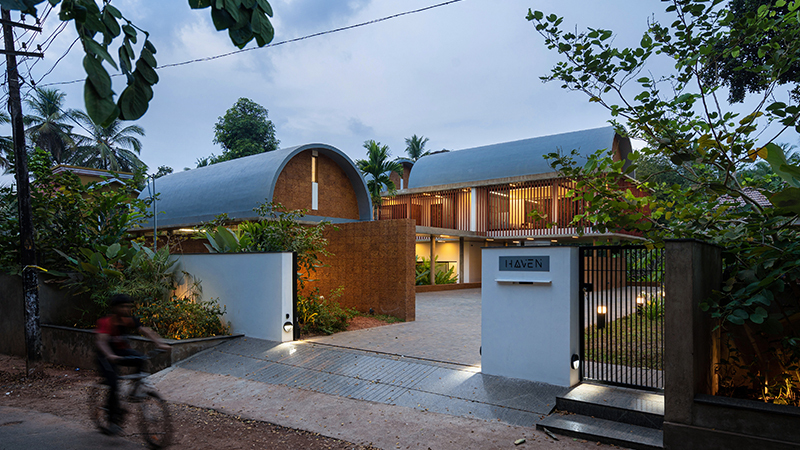| 公司: | Wittman Estes | 类型: | 建筑 |
|---|---|---|---|
| 地区: | 美国 | 标签: | 别墅私宅 |
项目The Hood Cliff Retreat是一系列隐藏在森林中的家庭小屋,可以俯瞰华盛顿州的胡德运河,它位于西北太平洋胡德运河西岸林地的悬崖之上,占地1.13英亩。"作为狂热的观鸟者和自然主义者,客户希望有一个室内户外家庭休闲场所,让他们沉浸在森林的静谧中,并捕捉到华盛顿微妙的阳光和朝向胡德运河和西部奥林匹克山脉的景色,"建筑师Matt Wittman说。
A series of family cabins hidden in the forest and overlooking Washington's Hood Canal, the Hood Cliff Retreat is located on a 1.13-acre site atop a bluff on a wooded site on the western shore of Hood Canal in the Pacific Northwest.“As avid bird watchers and naturalists, the clients wanted an indoor outdoor family retreat that would immerse them in the stillness of the forest and capture the delicate Washington sunlight and views toward Hood Canal and the Olympic Mountains to the west,” says architect Matt Wittman.
建于1962年的原址上,原来的黑暗和不透明的雪松木小屋让业主感到与自然隔绝,他们要求建造一个室内室外的休闲场所,让他们更接近土地,同时还能容纳一个扩展的项目,为他们的大家庭增加三个卧室和睡眠区。该项目有三个要素:1.原木屋的20'x20'的重新利用;2.木屋的加建;3.北面新的双层床房和浴室。
Built on the site in 1962, the original dark and opaque cedar cabin left the owners feeling cut off from nature, and they asked for a indoor outdoor retreat that would allow them to be closer to the land and also house an expanded program of three additional bedrooms and sleeping quarters for their extended family. The project has three elements: 1) The repurposed 20’x20’ footprint of the original cabin, 2) the cabin addition, and 3) a new bunkhouse and bathroom to the north.
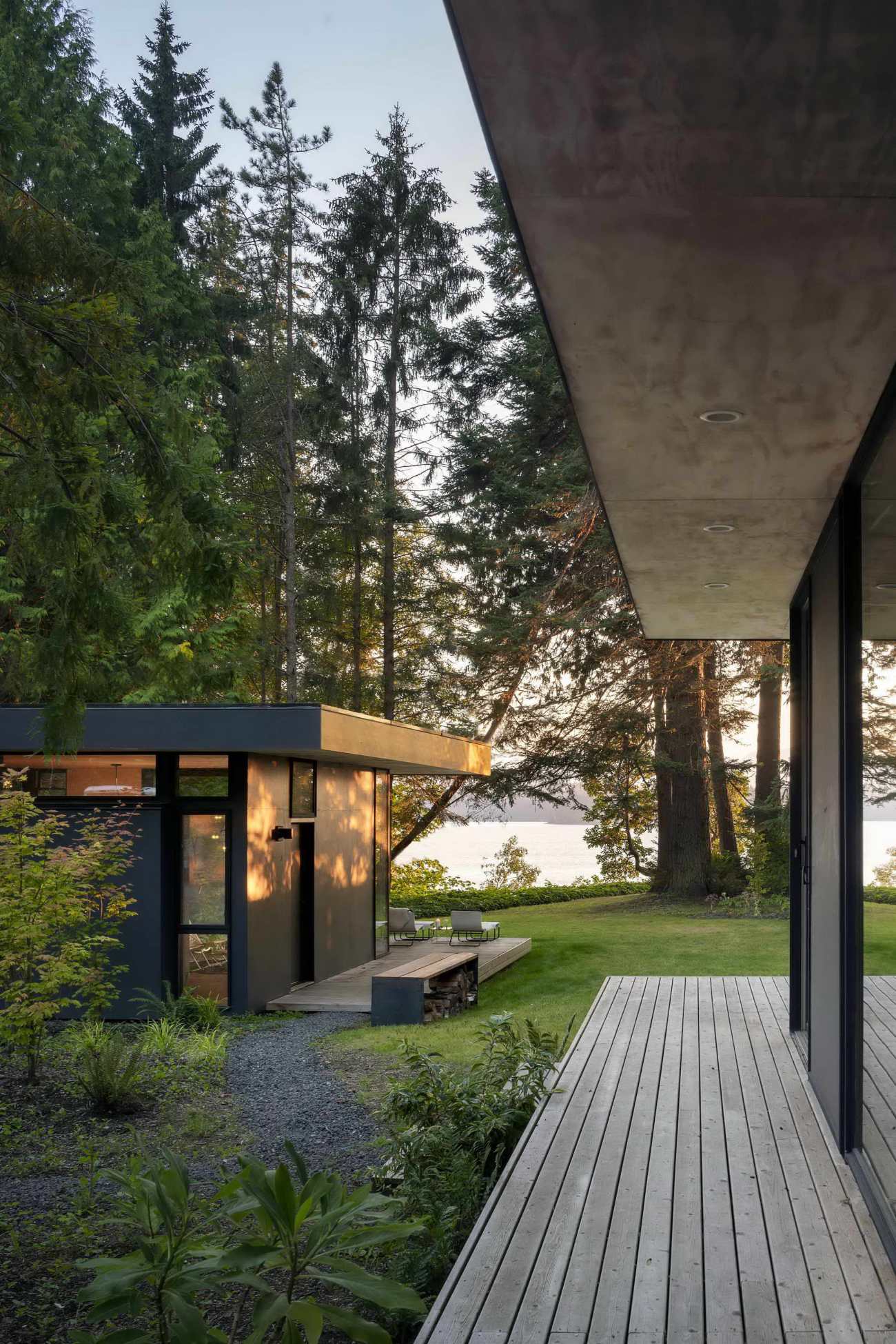 | 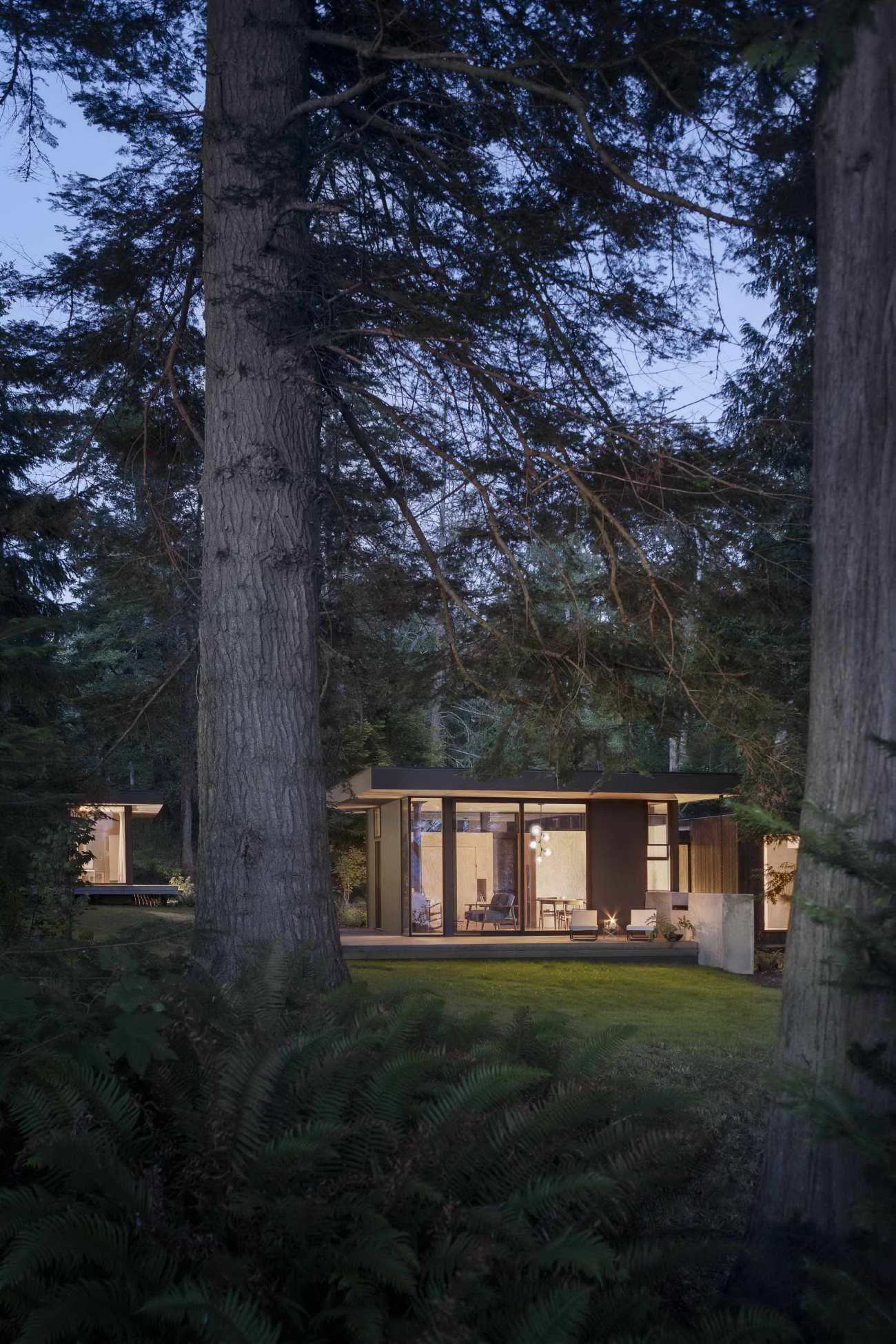 |
客户的职业是水文学和林业(他们热爱树木、土壤和丰富的自然世界),以及野生动物摄影(频繁的国际旅行,捕捉鸟类和其他动物在原生态栖息地的照片)。他们的成年子女是自然资源科学家,他们的大部分时间都深深投入到户外活动中。由于家人生活在全国各地,这个家庭渴望有一个地方能把他们聚集在一起。项目的愿景是一个家庭可以团聚的地方,庆祝他们对户外活动的热情,并与胡德运河的当地动植物联系在一起。
The clients had careers in hydrology and forestry (and had a deep love for trees, soils, and the richness of the natural world), and wildlife photography (with extensive international travel to capture images of birds and other animals in their native habitats). Their grown children work as natural resource scientists and spend much of their time deeply engaged with the outdoors. With family living across the country, the family yearned for a place to draw them together in one place. The vision was a retreat where the family could be together and celebrate their passion for being outdoors and connect with the native flora and fauna of Hood Canal.
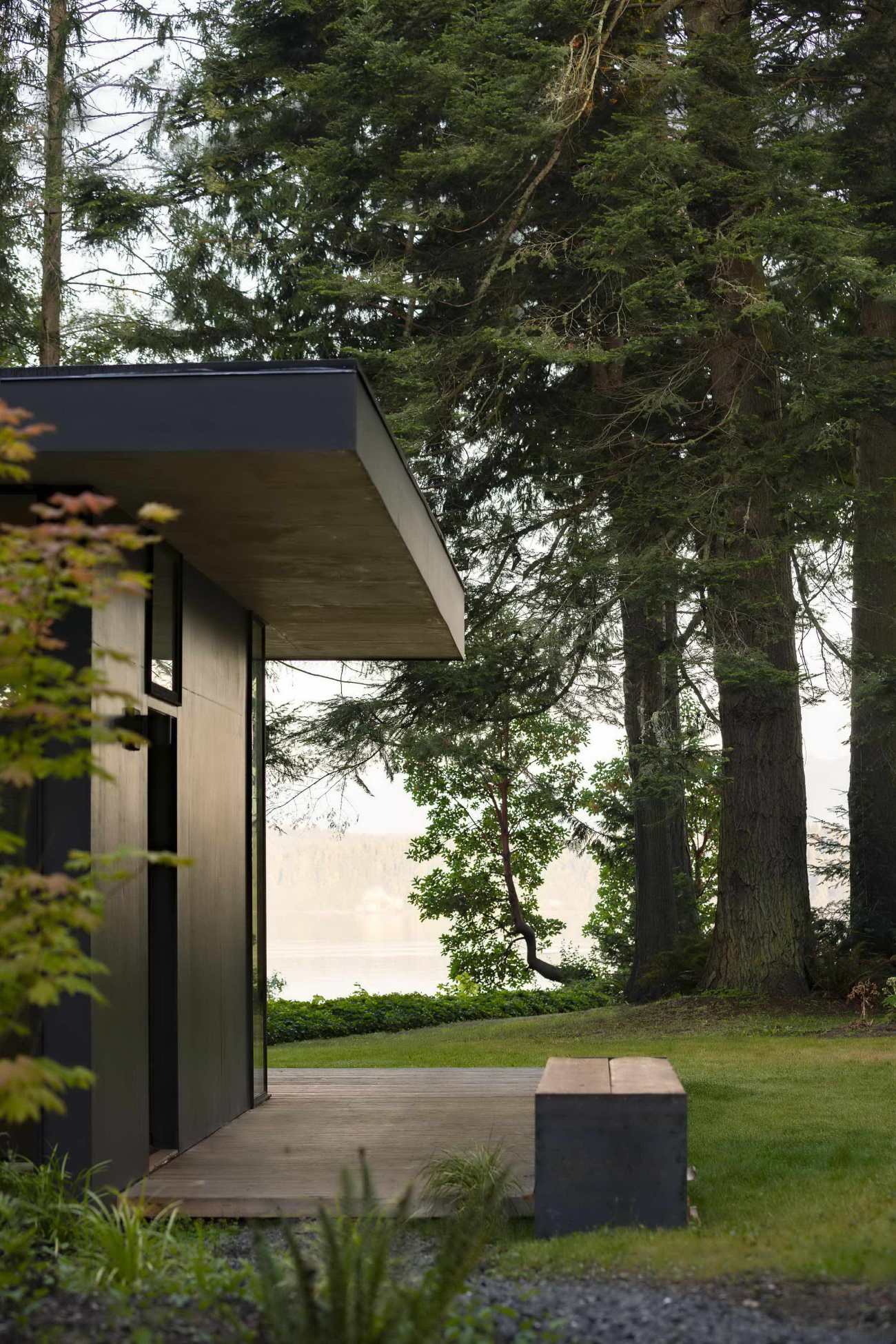 | 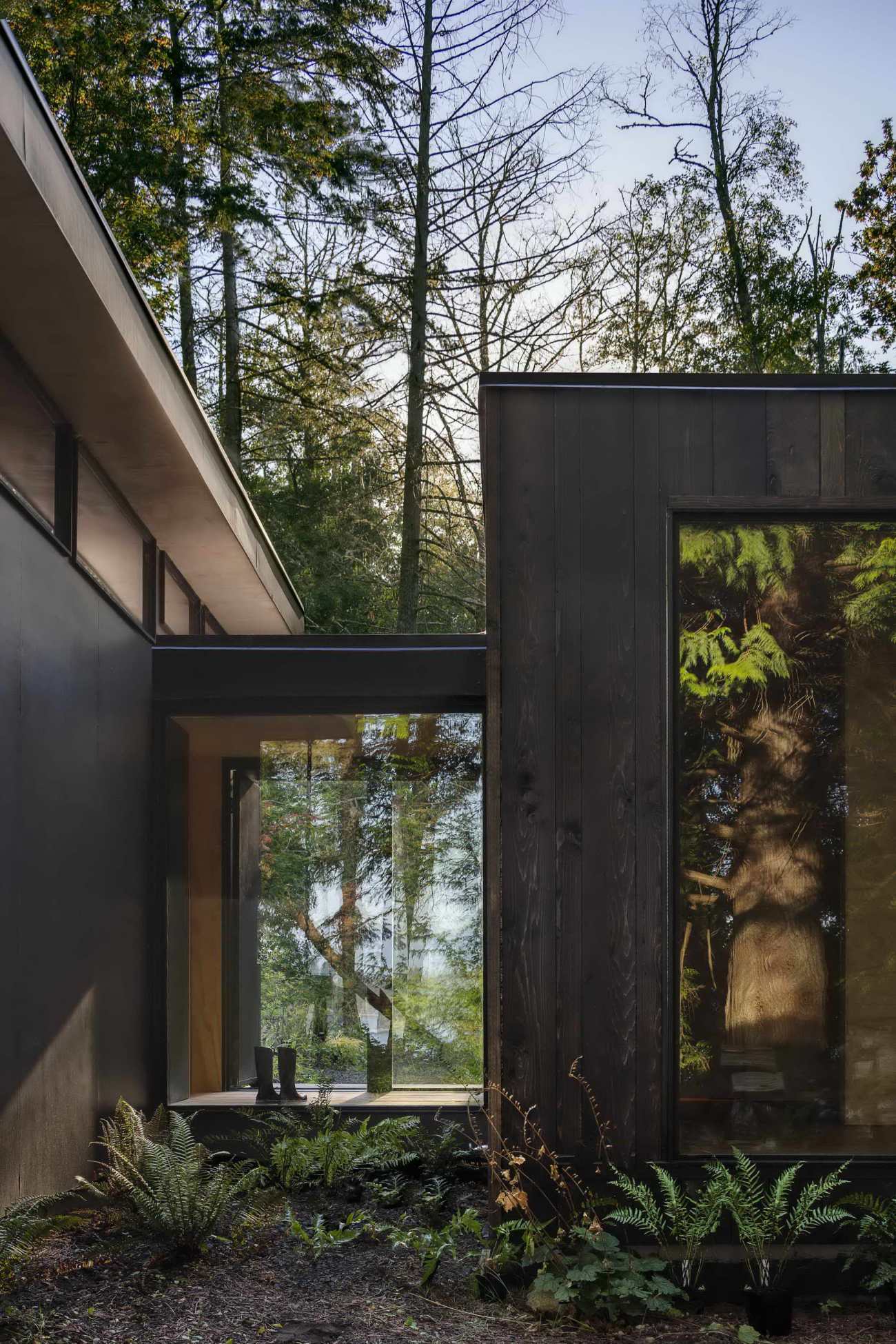 |
客户想要一个隐藏的住所,在那里他们可以观看鸟类,并采取在胡德运河的性质。虽然他们喜欢现代建筑,但他们并不想要一个过于表现自己的建筑。他们要求一套简单的结构,让他们能够亲近土地。这引起了Wittman的共鸣,他对自己童年时在爱达荷州北部牧场的简单乡土结构非常欣赏,并积极设计建筑,让人们"通过建筑体验自然之美"。全家人都在寻找一个地方,让他们的朋友和家人能够聚集在一起,同时也能体验片刻的孤独和思考。三个单层的体量,大面积的玻璃开口、推拉门和连续的露台,让这样的聚会和思考成为可能。
The clients wanted a retreat where they could watch birds and take in the nature of the Hood Canal. While they loved modern architecture, they did not want a building that was overly expressive of itself. They asked for a set of simple structures that would allow them to be close to the land. This resonated with Wittman, who had an appreciation for the simple vernacular structures of his rural childhood on a ranch in northern Idaho, and actively designs buildings allowing people to“experience the beauty of nature through architecture.” The family sought a place where their friends and family could gather together while also experiencing a moment of solitude and reflection. The three single story volumes with large glass openings, sliding doors, and continuous decks allow for such gathering and reflection.
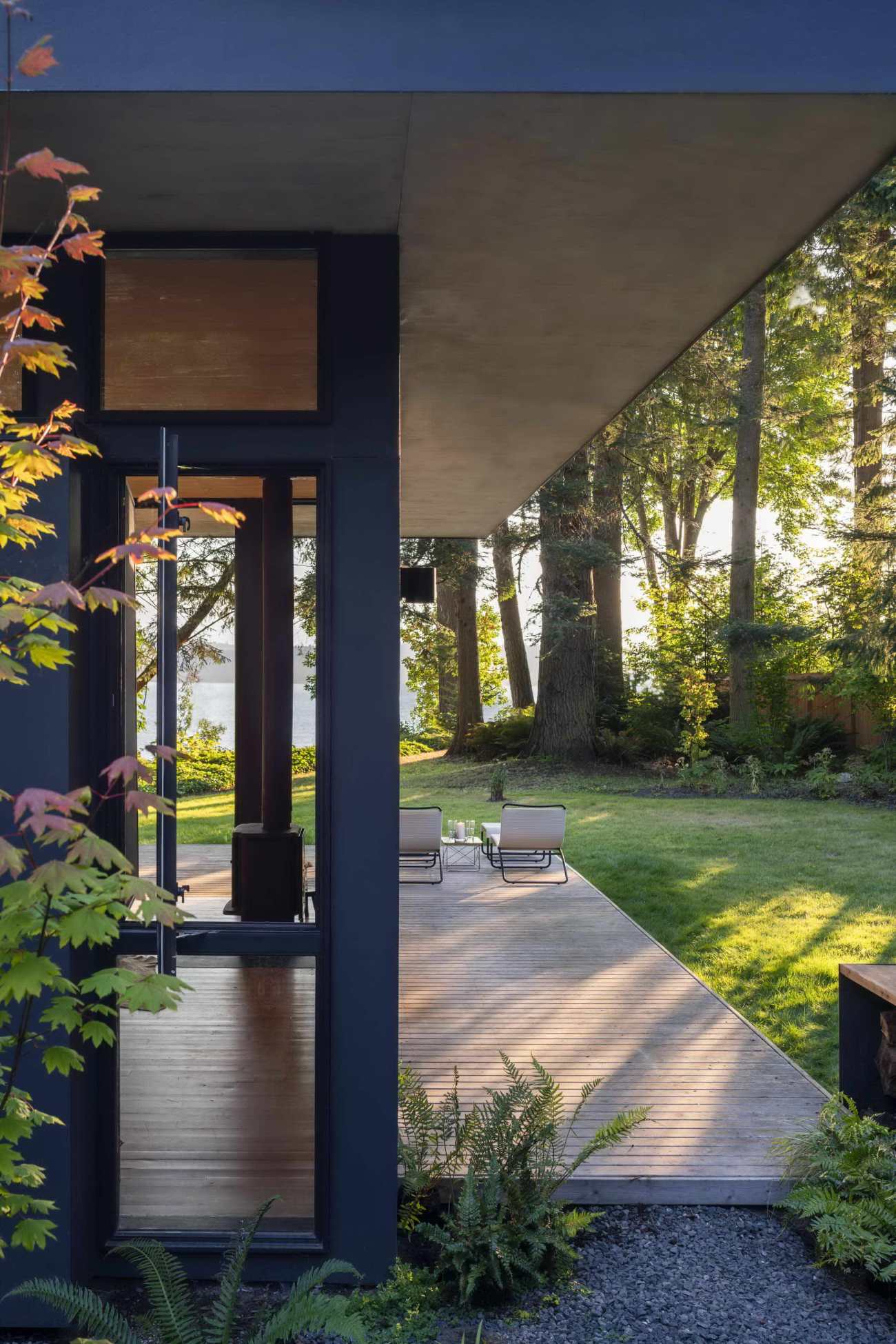 |  |
建筑遵从景观,灵感来自于自然,尤其是本地的killdeer鸟。"与大多数鸟类不同的是,killdeer并没有带来外面的植被来筑巢--它拉开现有的灌木丛,钻进现有的森林,在地面上筑巢。"Wittman说:“Hood Cliff Retreat寻求与地面建立类似的关系,让人感觉既与自然元素相连又受到保护,简单的细节和克制的材料的色调使建筑预算降到最低。”
The architecture defers to the landscape, inspired by nature and in particular the native killdeer bird.“Unlike most birds, the killdeer doesn’t bring outside vegetation to build its nest—it pulls away the existing brush, burrowing into the existing forest, and nesting on the ground,” says Wittman. Hood Cliff Retreat seeks a similar relationship with the ground that feels both connected to and protected from the elements of nature. Reclaimed beams and siding from the original cabin were re-purposed as countertops and interior cladding. Simple details and a restrained material palette kept the construction budget to a minimum.
 | 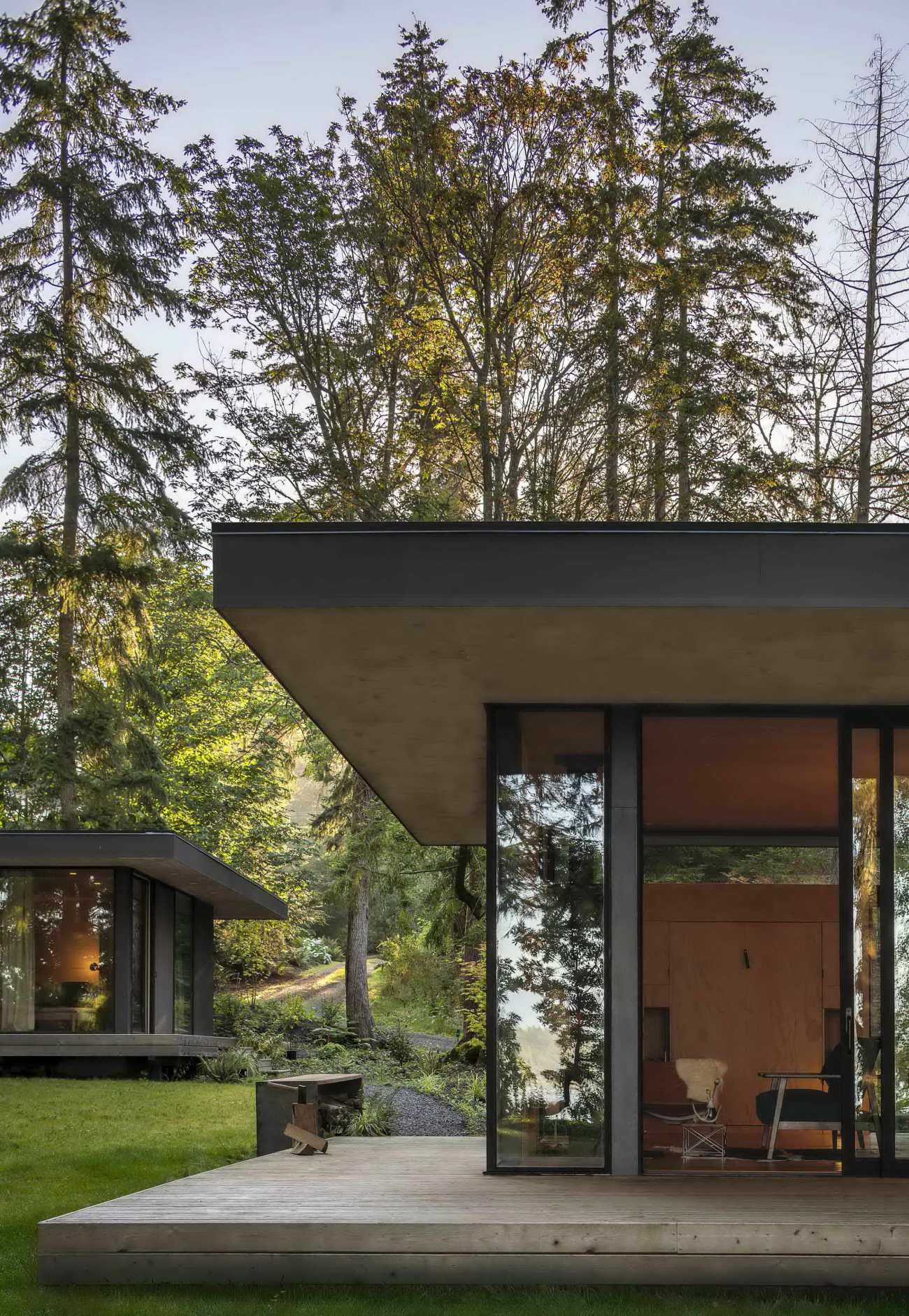 |
"我们试图消解内部和外部,森林,花园和结构之间的障碍,"Wittman说。阳光温暖了胶合板墙面和天花板,擦过温暖的红柏木板和现浇混凝土--让阴影和光线将简单的室内环境转变为更加复杂和微妙的东西。在主舱中,室内室外厨房有一个通透的窗户,将室内台面延伸到室外混凝土台面和内置的木质烧烤。有一个内置的墨菲床,让主舱在需要的时候可以成为一个灵活的睡眠区。高高的克莱斯特里窗户让室外的景色和室内的自然光都能看到。
“We sought to dissolve the barriers between the inside and out, between forest, garden, and structure,” says Wittman. Sunlight warms the plywood walls and ceilings, grazing the warm cedar boards and cast-in-place concrete—allowing shadow and light to transform the simple interior into something more complex and subtle. In the main cabin, the indoor outdoor kitchen has a pass-through window that extends the interior countertop into the outdoor concrete counter and built in wood barbecue. There is a built-in Murphy bed that allows the main cabin to be a flexible sleeping area when needed. High clerestory windows allow views outdoors and natural light inside.
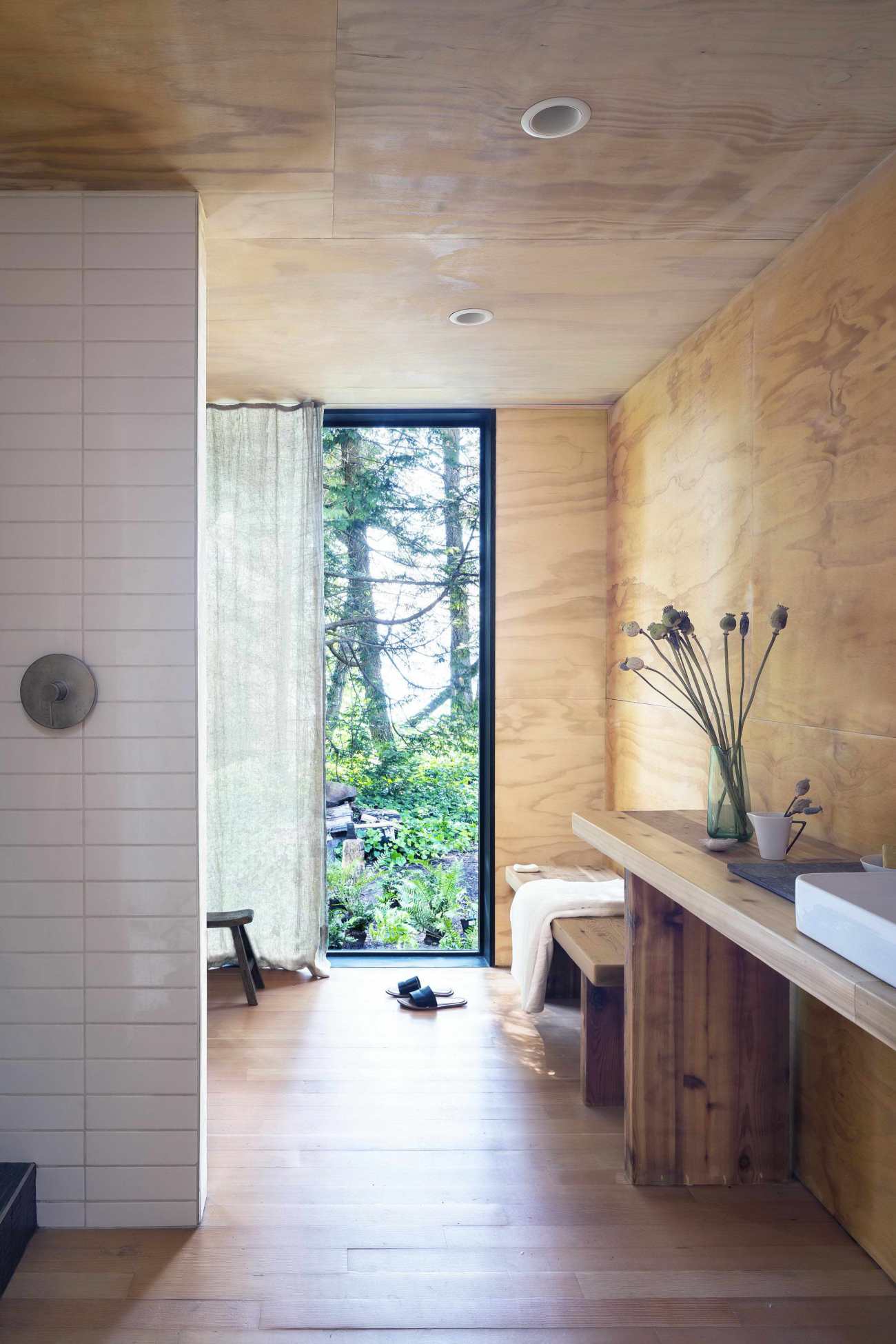 | 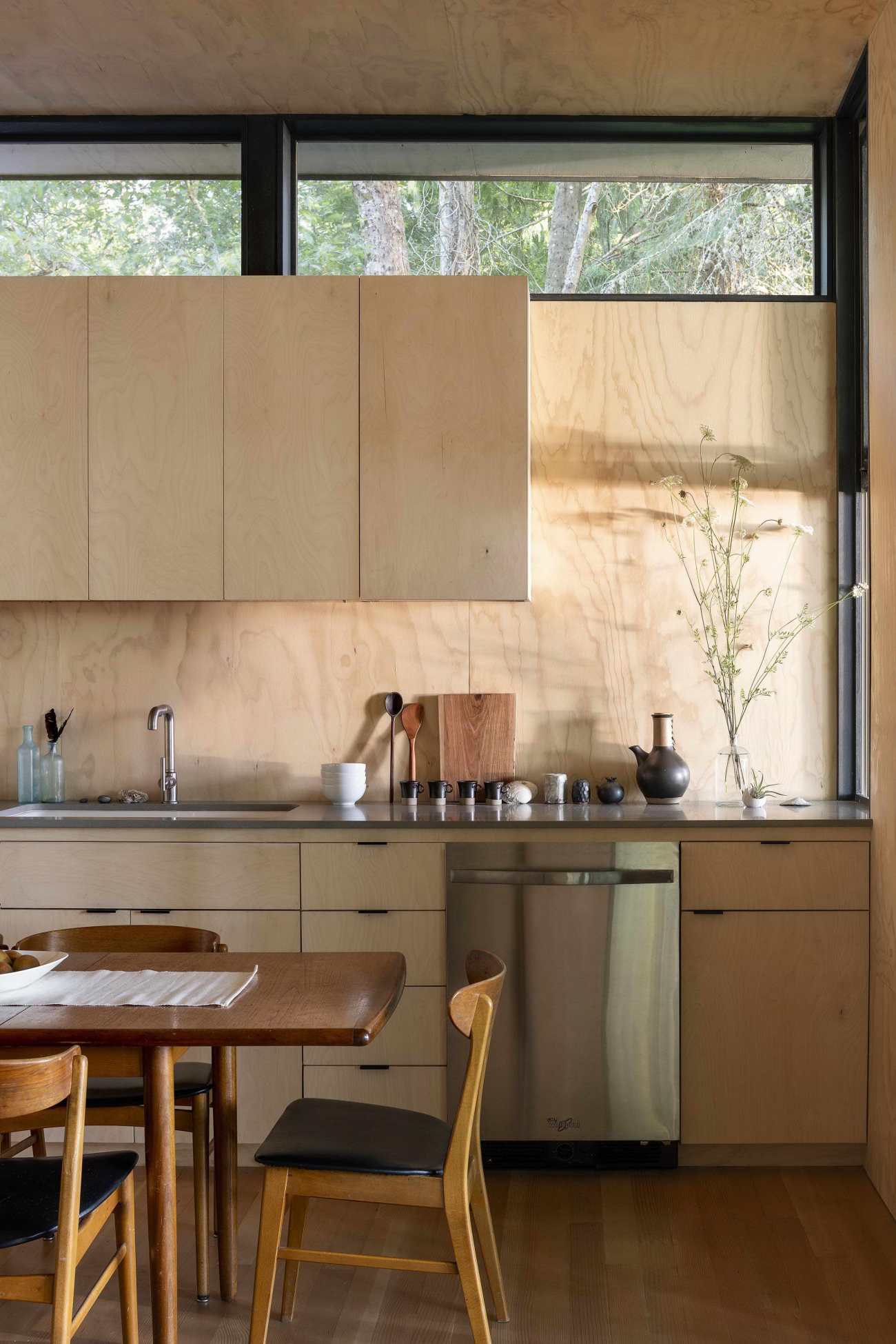 |
主浴室里的再生铸铁浴缸营造出在户外泡澡的感觉,同时又不影响休息的时刻。室外的粗锯雪松护墙板和水泥板饰面随着时间的推移自然而然地呈现出铜锈色,直到小屋的体积与森林的颜色相融合。这种内外的联系是建筑师如何在自然中敏锐地对待建筑。
A reclaimed cast iron tub in the master bath creates the feeling of soaking in the outdoors without interrupting moments of repose. Outside, the rough sawn cedar siding and cement panel finishes patina naturally over time until the cabin volumes converge with the colors of the forest. This inside-outside connection is how the architects approach building sensitively in nature.
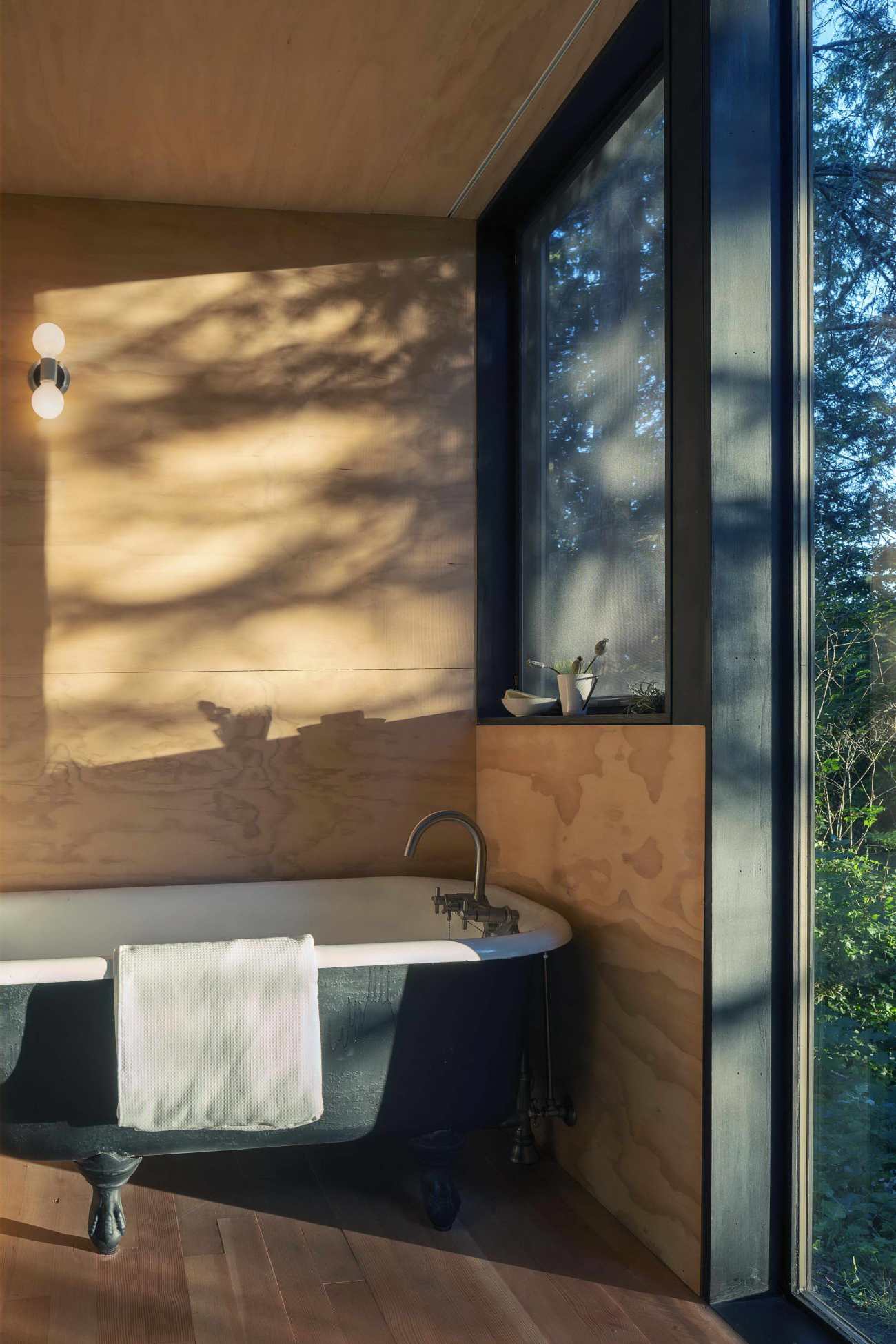 | 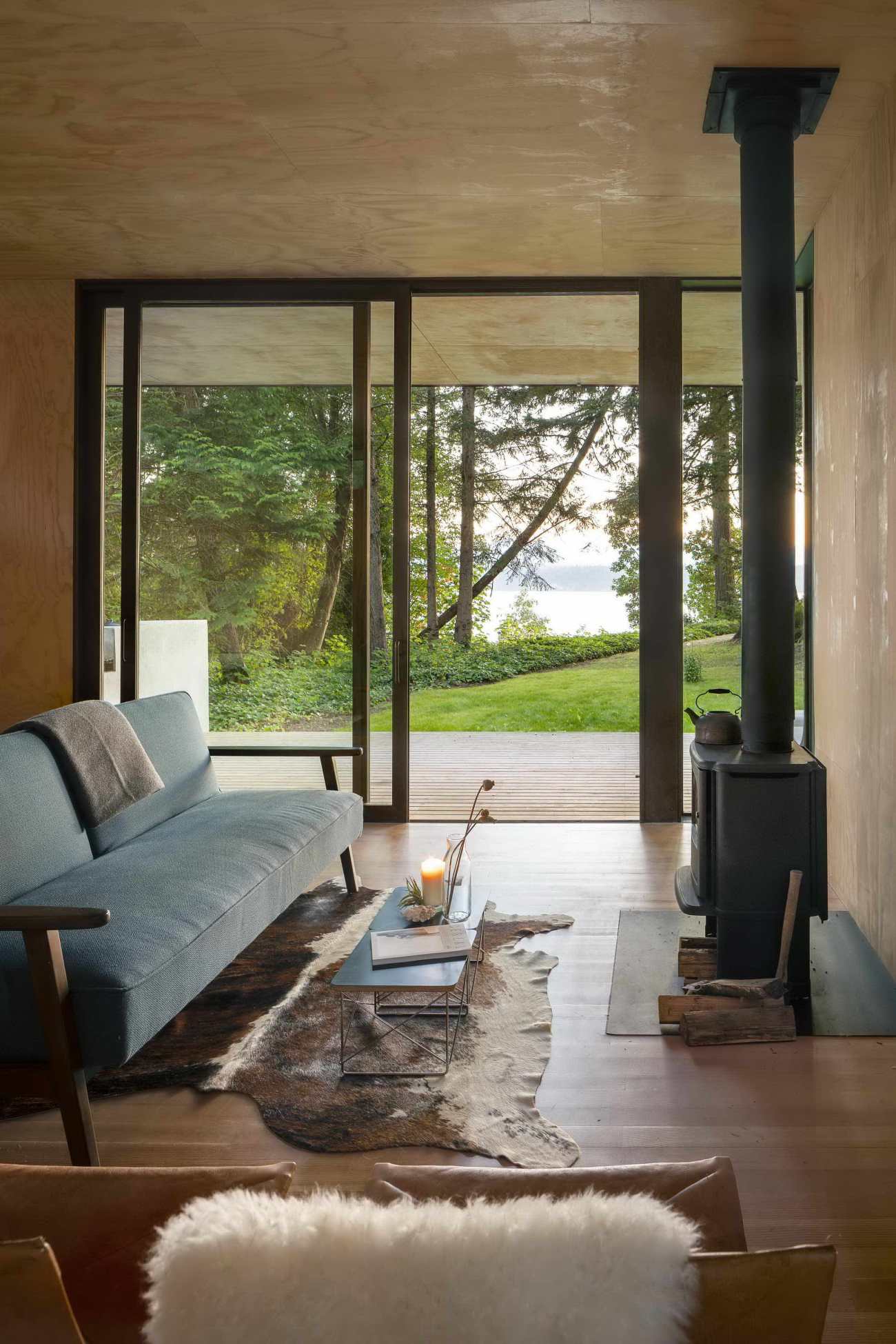 |
三座住宅结构是一个连续的相互联系的系列体验,组成了庆祝家庭在自然阳光和新鲜空气中聚会的美丽。疗养院体现了Wittman Estes的"触觉现代主义",将家庭与普吉特海湾生态系统的感觉和物理体验联系在一起,这个地方既美观又实用,而且是为热爱自然的家庭可持续的长期享受而建造的。
The three dwelling structures are a continuous interconnected series of experiences composed to celebrate the beauty of family gathering in natural sunlight and fresh air. The retreat is an expression of Wittman Estes’ “tactile modernism,” connecting the family to the sensation and physicalexperiences of the Puget sound ecosystem in a place that is beautiful, functional, and built for the sustainable long term enjoyment of the nature loving family.
▽场地平面图 Site plan
▽平面图 Plan
Project name:Hood Cliff Retreat
Company name:Wittman Estes
Website:https://www.wittman-estes.com
Contact e-mail:info@wittman-estes.com
Project location:Hood Canal, Washington
Building area (m²):80.8 m2
Wittman Estes design team:Matt Wittman AIA LEED AP, Jody Estes, Naomi Javanifard, and Erica Munson
Architect: Wittman Estes Architecture+Landscape
Structural Engineer: Strongworks Structural
Builder: Jack Colgrove Construction
Photo credits:Andrew Pogue
更新日期:2020-11-16 15:22:49
非常感谢 Wittman Estes 带来的精彩项目, 查阅更多Appreciations towards Wittman Estes for sharing wonderful work on hhlloo. Click to see more works!


